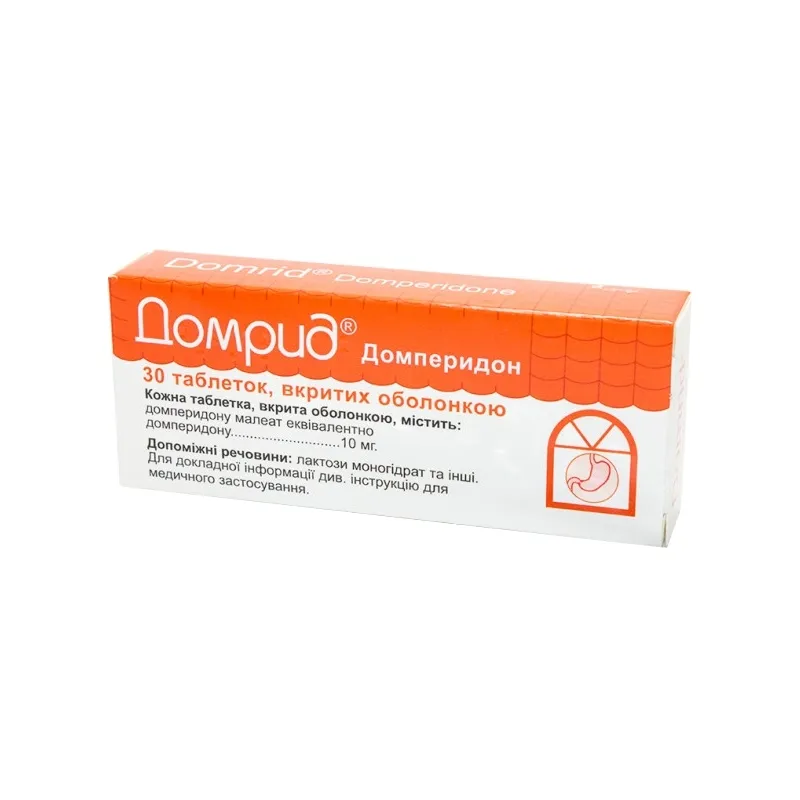Description
Domrid (Domperidone Maleate) Coated Tablets 10 mg. №30
Composition
Each coated tablet contains 10 mg of domperidone maleate as the active ingredient.
Mechanism of Action
Domperidone works by blocking dopamine receptors in the brain and gut. This action helps to increase the movement of the stomach and intestines, which can reduce feelings of nausea and vomiting.
Pharmacological Properties
Domperidone maleate, the active ingredient in Domrid tablets, exerts its antiemetic effects by antagonizing dopamine receptors in the chemoreceptor trigger zone and increasing gastrointestinal motility.
Indications for Use
Domrid tablets are indicated for the relief of symptoms of nausea and vomiting.
Contraindications
Do not use Domrid tablets if you have a known hypersensitivity to domperidone or any of the tablet’s components.
Side Effects
Potential side effects of Domrid may include headache, dry mouth, dizziness, and gastrointestinal disturbances. If any adverse reactions occur, discontinue use and consult a healthcare professional.
Usage Instructions
The recommended dosage is 1 tablet (10 mg) taken three times a day before meals. Swallow the tablets whole with a glass of water. Do not crush or chew the tablets.
Benefits Compared to Analogues
Domrid offers effective relief from nausea and vomiting with a well-established safety profile and proven clinical efficacy compared to other antiemetic agents.
Suitable Patient Groups
Domrid is suitable for use in adults, including the elderly, and adolescents for the management of nausea and vomiting.
Storage and Shelf Life
Domrid tablets should be stored in a cool, dry place away from direct sunlight. Check the expiration date on the packaging and do not use the tablets if expired.
Packaging Description
Domrid is available in blister packs containing 30 coated tablets of 10 mg each.
Clinical Evidence and Proven Effectiveness
Domperidone has been extensively studied for its efficacy and safety in treating gastrointestinal disorders. Clinical trials have demonstrated the effectiveness of domperidone in improving symptoms of nausea and vomiting without significant adverse effects.





